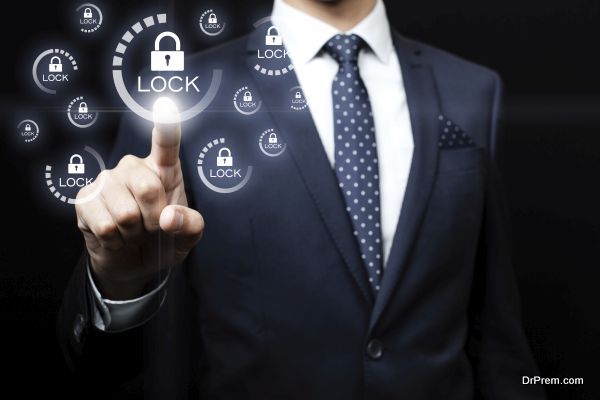Identity theft has become the big bad wolf in the headlines. Between corporate data breaches to old-fashioned credit card fraud, it dogs you every time you check the news. But it’s not just an issue for the front-page of your favorite site or magazine. With 6 out of 10 Americans knowing someone who has been the victim of fraud, the chances are high it could be you!
If you think it’s already too late, here’s what to do if your line of credit or credit card has been compromised. Otherwise, keep scrolling. Here are five tips to keep your personal information safe.
1. Share Your Information Carefully
 There are a lot of companies asking for your information, but they don’t all need to know it. Only share your personal details with trusted companies — either when purchasing something online or performing online banking tasks.
There are a lot of companies asking for your information, but they don’t all need to know it. Only share your personal details with trusted companies — either when purchasing something online or performing online banking tasks.
In recent years up to the present one of the most vulnerable and easily get tricked to fraudulent schemes are elderly people. To protect yourself and your loved ones from scams their should be safety prevention should be put in place.
2. Be Wary of Your Inbox
These days, fraudsters steal your personal information by coming into your inbox under the guise of your financial institution, sending you an email about your personal loan or line of credit.
While these fraudsters may copy your financial institution’s logo, they’ll request things a legitimate financial institution will never ask for, like your account Social Security numbers.
Be wary of how you share this information. Generally, legitimate financial institutions tend to collect this information over their secured website — not your email.
3. Use Strong Passwords
 While some thieves expect to trick you into sharing your data with them online, others break into your accounts by hacking your passwords. Making sure your passwords are strong may help lock your thief out of your information.
While some thieves expect to trick you into sharing your data with them online, others break into your accounts by hacking your passwords. Making sure your passwords are strong may help lock your thief out of your information.
Weak passwords tend to be dates or names that would be easy to guess with a passing knowledge about you or your family. As a result, strong passwords tend to be a random assortment of letters, numbers, and special characters.
You should also use a unique password for each account. This may protect other accounts in the event a fraudster is able to crack one of your passwords.
4. Check Your Credit Regularly
You have three free checks to use each year, granting you an opportunity to peek at what’s in your consumer file. This look at your record is an important step in securing your data. If you notice suspicious activity in a personal loan or line of credit, you can act right away to address these errors.
The faster you address possible fraud, the faster you might undo any harm it does to your financial good name.
5. Shred Important Mail and Documents
While most fraud today happens online, some still happens in person. To protect yourself from physical theft, make sure you always dispose of statements, bills, and other financial documents properly. This means shredding anything that may contain your full name, address, and account numbers.
Be Proactive
While it is possible to reverse fraud and identity theft, it may take a lot of time, effort, and patience on your part. And until you manage to get it removed from your records, it may also impact your credit history and affect how likely you can get a personal line of credit.
The bottom line? Don’t let it come to this. Be proactive and take early precautions to safeguard your identity. Taking these little steps to protecting your data may save you from becoming a victim.
Article Submitted By Community Writer





